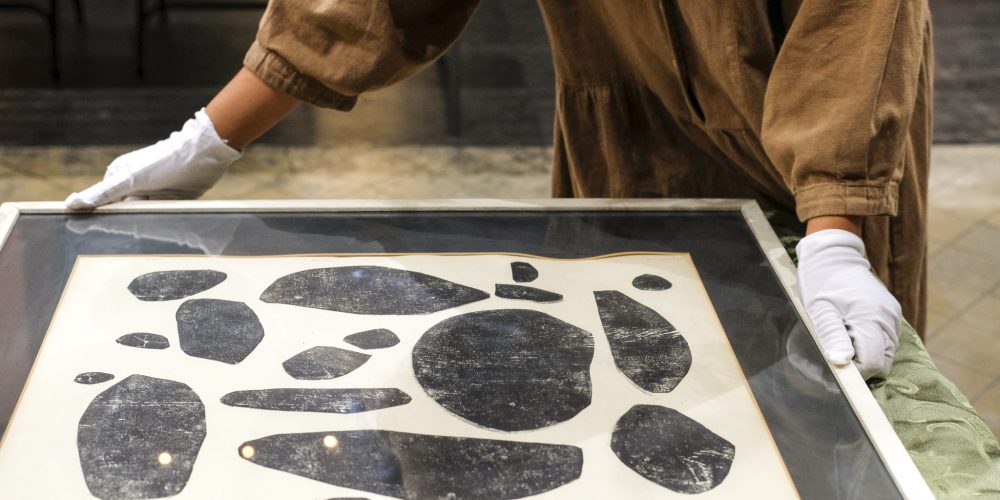
Ask an Archivist Day with Tessa Haas
We asked Fleisher’s Archivist, Tessa Haas, a few questions for Ask an Archivist Day! Archivists are trained in handling original materials and documents including works on paper, photos, films, and maps, as well as digital materials. Having an organized archives system is an integral part of preserving historic objects for generations to come. We are grateful to have Tessa helping us keep our archives organized for future members of the Fleisher community!

Q: What is the purpose of your archives project?
A: I am working to organize, catalogue, preserve, and research various art and artifacts that have accumulated across Fleisher’s long history so they may be enjoyed by future generations. Making these objects accessible within and beyond our community is vital to the preservation of Fleisher’s history and to a broader history of art and education in Philadelphia. Accessible art classes are a foundational tenant at Fleisher, so making our material history and collection accessible is integral to our mission.
Q: What did you study in school?
A: I have a Master’s Degree in Art History with a focus in Material Culture and Studies from Bryn Mawr College, where I am currently a Ph.D. student. My focus is on screen-based media and material culture, which makes this project at Fleisher particularly exciting for me.
Q: How does this project intersect with other departments at Fleisher?
A: Much of Fleisher’s history is preserved orally, so I have learned a lot through my conversations with teaching faculty, staff, and board members. This is a massive institutional effort and many people have been enthusiastic to help. I am excited to continue working with an incredibly engaged community that champions historical and archival preservation and accessibility.
Q: What is your favorite piece found in the archives?
A: Scott Cooper, Fleisher’s Custodian and Studio Tech, found a group of framed Samuel B. Hankins woodcuts from the 1960s in the organ room behind the Sanctuary. The surfaces are dry and scratchy, while the printed forms are bulbous and full, they are really stunning. We also found an incredible first edition monograph of Louis Kahn’s Complete Works. I lived in one of his buildings my first year at Bryn Mawr – his attention to materials and detail is amazing. The archives are pretty vast in size and scope… I am sure everyone could find a personal connection within the objects.
Q: How do you hope this project impacts future members of the Fleisher community?
A: By cataloguing our collection of art and artifacts I hope that our community will be able to connect with past generations of Fleisher in new ways, and find agency within the preservation of their histories. We’re really starting from scratch in many ways, so my focus now is on laying an archival foundation and implementing best practices. In the future I’d like to make archival records accessible through an online database. One step at a time!

 Donate
Donate
To get updates on events, exhibitions & class information:
"*" indicates required fields